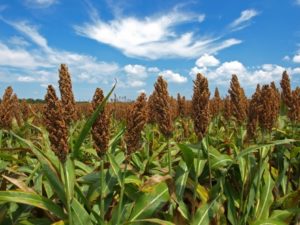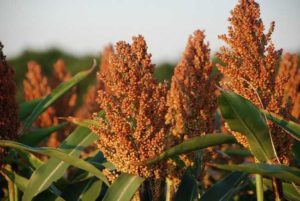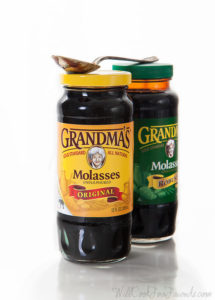Yesterday was my last post on New Mexico. As I discussed, way back in October, we had some unexpected difficulty getting back to Ohio. Because we didn’t have any trailer brakes, we took the slow roads to Junction City, Kansas, to get a new brake actuator installed. On the way we passed acres of sorghum.
From Santa Fe, New Mexico, we took I-25 until we hit US 412 through eastern New Mexico. Once we hit the Oklahoma panhandle, we turned off 412 and took US 56 through Oklahoma and Kansas. US 56 is a very rural road that passes by lots of farms and small county seats. Silos along railroad tracks were the tallest things in the area. In order to keep from stressing the truck brakes, we stopped infrequently. During this long haul we paid attention to the sights along the way.
 In Oklahoma and western Kansas, the sights included acre after acre of a medium height crop that had a red, orange and bronze head, heavy with something that looked like berries. After miles of this crop – just this crop – we needed to find out what it was.
In Oklahoma and western Kansas, the sights included acre after acre of a medium height crop that had a red, orange and bronze head, heavy with something that looked like berries. After miles of this crop – just this crop – we needed to find out what it was.
Turns out we were driving through acres of sorghum. Three million acres of sorghum in the Oklahoma panhandle and western Kansas alone. With little else to do, we turned to Google to learn more about sorghum.
 There are four kinds of sorghum grown in the United States. Grain sorghum, the kind we saw, is the shortest and has the fullest head (panicle) of grain. The United States is the world’s largest producer of grain sorghum, with over 480 million bushels in 2016. 55% of that sorghum was exported in 2016. We wondered why the sorghum wasn’t harvested when we drove by at the end of October, and found out the abundant fall rain had made the grain too wet to harvest. The grain would keep another couple of weeks until it dried enough to harvest.
There are four kinds of sorghum grown in the United States. Grain sorghum, the kind we saw, is the shortest and has the fullest head (panicle) of grain. The United States is the world’s largest producer of grain sorghum, with over 480 million bushels in 2016. 55% of that sorghum was exported in 2016. We wondered why the sorghum wasn’t harvested when we drove by at the end of October, and found out the abundant fall rain had made the grain too wet to harvest. The grain would keep another couple of weeks until it dried enough to harvest.
Forage sorghum is used as silage for feeding livestock and grows eight to 15 feet tall. Biomass sorghum grows up to 20 feet and is used to produce bioenergy such as ethanol. Sweet sorghum is used to produce syrup. Sweet sorghum used to be the primary sweetener in the United States but today is usually used in whiskey and rum production.
 I use a lot of sorghum molasses when I do colonial cooking because of its ready availability to poorer people. People, especially in the south, could grow it and have their own sweetener. So learning about sorghum as we drove through Oklahoma and Kansas added another bit of history that I can use while I work. It just highlights the importance of staying curious when you travel. You never know what you will learn.
I use a lot of sorghum molasses when I do colonial cooking because of its ready availability to poorer people. People, especially in the south, could grow it and have their own sweetener. So learning about sorghum as we drove through Oklahoma and Kansas added another bit of history that I can use while I work. It just highlights the importance of staying curious when you travel. You never know what you will learn.
